By Major General Michael Reynolds
By early 1945, less than a year before General George S. Patton’s mysterious death, Adolf Hitler’s armies were almost exhausted. With most of Poland in Soviet hands and the Ruhr in ruins from Allied air attacks, the replenishment of fuel, ammunition, and weapon stocks had almost come to a halt, and coal and steel production had been reduced to a fifth of what it had been only six months earlier.
On the Eastern Front, the Soviet winter offensive had reached a line less than 100 miles from Berlin, and although in the West the Siegfried Line was still basically intact and the Rhine had yet to be crossed, it was clear that with American divisions arriving in Europe at the rate of one a week it was only a matter of time before the Third Reich collapsed in chaos and disaster. Still, Hitler refused to consider surrender. (You can get a more in-depth look at the final months and days of the Second World War inside WWII History magazine.)
Pressure to Cross the Rhine
The success and speed of the Soviet advance had in fact presented the Western Allies with a serious problem: unless they broke through to the North German plain within a few weeks, Stalin would almost certainly seize control of virtually the whole of Germany, including its Baltic and North Sea ports.
The Supreme Allied Commander in Europe, Dwight D. Eisenhower, had issued his outline plan for the first phase of the advance into Germany on the last day of 1944. It called first for the destruction of the German forces west of the Rhine, following which Field Marshal Bernard Montgomery’s 21st Army Group (British and Canadian) was to make the main drive to the North German Plain, north of the Ruhr, while General Omar Bradley’s 12th Army Group (American and French) made a complementary, but secondary, attack from the Mainz–Frankfurt area northeast to Kassel. The overall objective of the plan was to effect “a massive double envelopment of the Ruhr to be followed by a great thrust to join up with the Russians.”
After studying it, Monty came to the conclusion that it did all he wanted in that it put the weight in the north and put the Ninth American Army under his command. Even more amazingly, it gave him the power of decision in the event of disagreement with Bradley on the boundary between the 12th and 21st Army Groups.
Ike’s detailed plan for the Rhineland campaign, which was to precede the thrust into Germany proper, saw Monty’s 21st Army Group, with the Ninth U.S. Army under command, seizing the west bank of the Rhine from Nijmegen to Düsseldorf. During this phase, Bradley’s 12th Army Group was to maintain an aggressive defense. Then, while Monty prepared to cross the lower Rhine, Bradley was to secure the river from Düsseldorf to Köln, following which General George S. Patton’s Third Army would “take up the ball” and thrust eastward from Prüm to Koblenz. At the same time, the Third and Seventh U.S. Armies would be responsible for securing crossings over the Rhine between Mainz and Karlsruhe for the forces destined to carry out the thrust south of the Ruhr.
“Aggressive Defense”
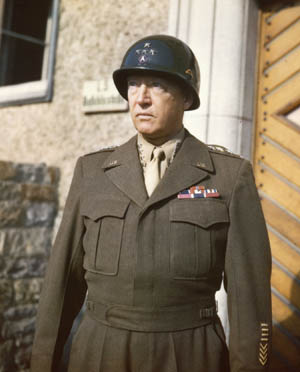
Needless to say, Bradley was far from happy to see Monty being given not only the main role, but also a complete U.S. army. With two-thirds of the Allied Expeditionary Force now made up of American troops, he had wanted, not surprisingly, the main effort to be made by American troops under American command. Indeed, he envisaged all four U.S. armies driving into central Germany with the British, Canadian, and French armies being relegated to flank protection. He was bitterly disappointed when his plea fell on deaf ears.
Inevitably, Patton was furious when he was told that his Third U.S. Army was to adopt a posture of “aggressive defense,” while Monty’s 21st Army Group launched a major offensive. On February 4, he wrote to his wife, Beatrice, telling her that if she heard he was on the defensive, “It was not the enemy who put me there. I don’t see much future for me in this war. There are too many safety-first people running it.”
Patton was certainly not going to be defeated by the safety-first people, and he chose to view the order to adopt a posture of aggressive defense as meaning that he could “keep moving towards the Rhine with a low profile.” He told his staff that the Third Army was going to carry out an “armored reconnaissance,” but that it would be done with seven divisions and that the initial objectives were Prüm, Bitburg, and the vital city of Trier on the Mosel River. Furthermore, he told his commanders to make sure that their units were always fully committed so that they could not be removed from his command and placed in Eisenhower’s new theater reserve. He wrote in his diary: “Reserve against what?…Certainly at this point in the war no reserve is needed—simply violent attacks everywhere with everything.”
Draining Patton’s Force
On February 10, Bradley telephoned Patton to tell him that Ike was transferring divisions from the 12th Army Group to General Bill Simpson’s Ninth U.S. Army. The latter was now, of course, part of Monty’s army group. Patton replied that as the oldest and most experienced serving general in the theater he was damned if he would release any of his divisions or go onto the defensive, and that he would resign rather than comply with such orders. He clearly had no intention of really resigning, but he withdrew his threat anyway when Bradley suggested that he owed too much to his troops to even consider it. Nevertheless, in early February Patton lost the 17th Airborne and 95th Infantry Divisions to Simpson and Monty.
The area in which the Third Army was operating during February 1945, the Eifel, is hilly, heavily forested, and bisected by three fast- flowing rivers, which at that time were swollen by the snow and rains of the worst winter in 38 years. Patton wrote later, “The crossing of … these rivers was a magnificent feat of arms.”
The campaign, carried out in appalling conditions, cost a total of 42,217 battle casualties and a staggering 20,790 nonbattle casualties, but it was eventually successful. By March 1, Patton’s troops had captured Prüm and Bitburg; Trier fell a day later. Ike’s headquarters had estimated that it would take four divisions to capture the former Roman provincial capital of Trier, but Patton was able to send a message saying, “Have taken Trier with two divisions. Do you want me to give it back?”
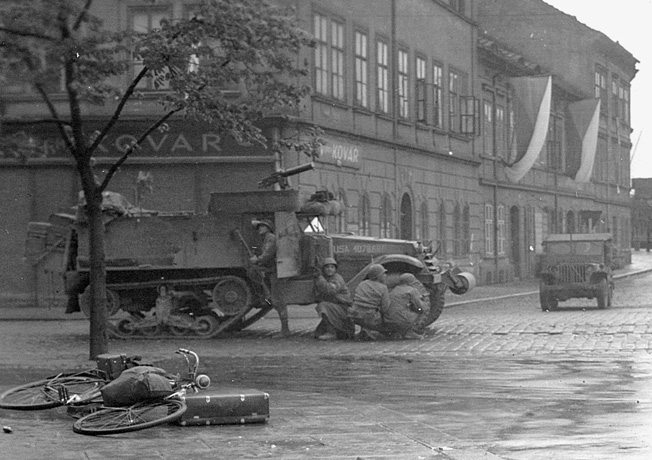
On March 5, General Courtney Hodges’s First U.S. Army finally went on the offensive. Köln fell on the 6th, and to everyone’s amazement, by 4 pm on the 7th a bridge had been secured over the Rhine, roughly halfway between Köln and Koblenz—the Ludendorff railway bridge at Remagen. “We were quite happy over it, but just a little envious,” wrote Patton later.
American bravery and initiative had ensured that the bridge, although prepared for demolition, was secured intact. But the euphoria soon disappeared the following day when, sadly for Bradley, Eisenhower gave orders that to provide the necessary number of divisions to Simpson’s Ninth Army for Monty’s northern push, no more than four were to be committed at Remagen and that for the time being at least the bridgehead was to be held but not developed.
This, in fact, also made sense tactically since beyond the bridge for about 12 miles were heavily forested mountains crossed by poor roads, making further advance against any kind of determined resistance extremely difficult. Even so, by the 17th, when the bridge finally collapsed, there were six American divisions in a bridgehead 10 miles deep and 30 miles wide.
“Take the Rhine on the Run”
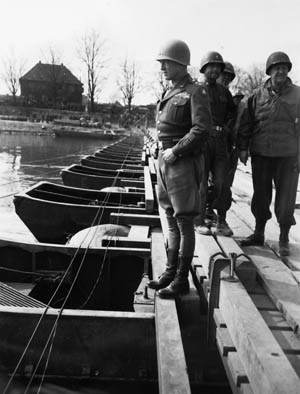
On March 5, as the First U.S. Army launched its attack, General George S. Patton finally obtained Eisenhower’s authority to advance into the rest of the Rhineland Palatinate. Bradley told him to “take the Rhine on the run,” and on March 10, just three days after the Remagen bridge was captured by the First Army, Patton’s 4th Armored Division reached the river north of Koblenz. It had advanced 55 miles in less than 48 hours. On the 13th, Patton ordered his divisions across the Mosel and through the Hunsrück, a mountainous area to the east of Trier thought by SHAEF (Supreme Headquarters Allied Expeditionary Force) to be too difficult for armor. Nevertheless, by the 22nd he had eight divisions on the Rhine from Koblenz to Ludwigshafen.
With that, Patton’s campaign west of the Rhine was over. It had cost another 7,287 casualties, but the Third Army engineers were ready, and Patton, desperate to cross the great river before Monty, decided that his men should make a feint at Mainz and cross at once at Oppenheim. By daylight on the 23rd, six battalions were over the river for a loss of only 28 men killed and wounded, while other infantry and engineer units had crossed just to the north, at Nierstein, without opposition. Patton telephoned Bradley: “Brad, don’t tell anyone but I’m across … there are so few Krauts around there they don’t know it yet. So don’t make any announcement. We’ll keep it secret until we see how it goes.”
However, the Germans soon became aware of the crossings and after heavy Luftwaffe raids on the Third Army pontoon bridges during the day, Patton called Bradley again that evening: “For God’s sake tell the world we’re across … I want the world to know Third Army made it before Monty.”
In fact, the world already knew. At Bradley’s headquarters that morning, Patton’s representative had announced that the Third Army had crossed the Rhine at 10 pm on March 22, “without benefit of aerial bombing, ground smoke, artillery preparation and airborne assistance.” Clearly, this was a dig at Montgomery, who was using all these assets at that very moment to assist his crossing of the same river.
General Order Number 70
On the day his first troops crossed the Rhine, Patton issued General Order Number 70 to his Third Army and to his supporting XIX Tactical Air Command: “In the period from January 29 to March 22, 1945, you have wrested 6,484 square miles of territory from the enemy. You have taken 3,072 cities, towns, and villages, including among the former: Trier, Coblenz, Bingen, Worms, Mainz, Kaiserslautern, and Ludwigshafen. You have captured 140,112 enemy soldiers and have killed or wounded an additional 99,000, thereby eliminating practically all of the German 7th and 1st Armies. History records no greater achievement in so limited a time … The world rings with your praises; better still General Marshall, General Eisenhower, and General Bradley have all personally commended you. The highest honor I have ever attained is that of having my name coupled with yours in these great events.”
The following day George Patton crossed the Rhine on a pontoon bridge at Oppenheim. Halfway across he undid his trousers “to take a piss in the Rhine. I have been looking forward to this for a long time,” he wrote in his diary. Another report says that he added, “I didn’t even piss this morning when I got up so I would have a really full load. Yes, sir, the pause that refreshes.” He had not only beaten Monty across the famous river, he had relieved himself in it two days before Winston Churchill! On arrival on the eastern bank he deliberately stubbed his toe and “fell, picking up a handful of German soil, in emulation of … William the Conqueror,” who allegedly did the same thing on arriving on the shore of England in 1066.
The Raid on Hammelburg
On March 23, after gaining his first bridgeheads over the Rhine, Patton had written to his wife, “I am scared by my good luck. This operation is stupendous.” But alas, his luck was about to run out, at least temporarily, in what became known as the Hammelburg raid.
Patton’s son-in-law, Lt. Col. John Waters, had been captured in North Africa in February 1943. It seems that Patton learned on or shortly before March 23 that Waters was being held in a German prison camp, Oflag XIIIB, three miles south of Hammelburg and some 60 miles east of Frankfurt. How he found out remains a mystery. The camp in fact held some 1,230 Americans and about 3,000 Serbian officers, former members of the Royal Yugoslav Army.
On March 25, Brig. Gen. William Hoge, the commander of the 4th Armored Division, received an order from his corps commander, Maj. Gen. Manton Eddy, telling him to mount a special task force (TF) to liberate Oflag XIIIB. On the same day, Patton’s general factotum and bodyguard and a former sergeant in Patton’s headquarters in World War I, Major Al Stiller, arrived at Hoge’s headquarters and announced that he had been ordered by Patton to accompany the TF. Not surprisingly, both Eddy and Hoge were unhappy with the idea of a raid some 40 miles behind enemy lines, and they expressed their concerns. This brought Patton to XII Corps on the 26th, and he ended up giving Hoge a direct order over the telephone “to cross the Main River and get over to Hammelburg.” Apparently it was at this point that Hoge turned to Stiller, who had been listening, and was told that Patton’s son-in-law was one of the prisoners in the camp.
The TF organized for the raid came from Lt. Col. Creighton Abrams’s Combat Command B (CCB) of the 4th Armored Division. Its commander was a young captain named Abraham Baum, and it comprised 16 tanks, 27 half-tracks, three 105mm self-propelled guns, and a total of 294 officers and men, including Al Stiller. Quite how the TF was meant to carry back some 1,200 released American prisoners remains a mystery—the total seating capacity of the vehicles was well under 500. Be that as it may, the basic plan was relatively simple. CCB would cross the Main River and make a hole in the German defenses, following which TF Baum would drive flat out for the camp. It was hoped that the raiding party would be safely back behind U.S. lines in less than 24 hours.
A Disastrous Outcome
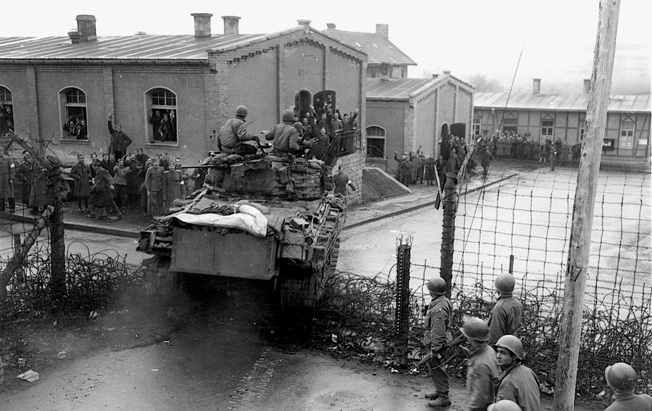
Task Force Baum set out at 7 pm on the 26th, and by first light on the 28th it had ceased to exist. Although the American prisoners were freed for a time, the raid ended up in chaos. Nine members of TF Baum were killed, 32 wounded, including Baum, and 16 were never seen again. Every vehicle was lost, and most of the prisoners and the raiding party ended up back in the camp, including the reason for the raid, John Waters, who was badly wounded. He was still in Oflag XIIIB when a unit of the 14th Armored Division, part of the Seventh Army, reached the camp on April 5.
Waters’s life had been saved by a Serbian doctor. Patton sent his personal doctor, Charles Odom, to look after him and arranged for him to be airlifted to Frankfurt. This preferential treatment apparently caused resentment among some of the other wounded. On April 5, Patton wrote to his wife, “I feel terrible. I tried hard to save him and may be the cause of his death. Al Stiller was in the column and I fear he is dead. I don’t know what you and B [his daughter] will think. Don’t tell her yet … We have liberated a lot of PW camps but not the one I wanted.” On May 1, Stiller was found unharmed in another PW camp at Moosburg in southern Germany.
Officially, the Hammelburg raid never happened. When Patton visited Baum in the hospital to award him a Distinguished Service Cross, he told him he had done “one helluva job.” Baum replied that he could not believe the general would send his men on a mission like that to rescue one man.
Patton allegedly replied, “That’s right, Abe, I wouldn’t.” After Patton left, his aide told Baum the raid had been classified Top Secret and that he was to use discretion when discussing it. Baum interpreted this to mean that his TF would get no recognition and that he and his men had been “screwed again.”
Revealing Patton’s Motivations
Needless to say, Patton blamed everybody except himself for the failure of the Hammelburg raid, including Bradley, Eddy, and Hoge. In his April 5 letter to his wife, he wrote, “My first thought was to send a combat command but I was talked out of it by Omar and others.”
Patton went even further in his diary, where he claimed that he sent only two companies instead of a complete combat command “on account of strenuous objections of General Bradley.”
This accusation, however, seems to have been contradicted by Bradley who wrote later, “It was a story that began as a wild goose chase and ended in tragedy. I did not rebuke him for it. Failure itself was George’s own worst reprimand.” In his own book, War As I Knew It, Patton certainly blamed Eddy and Hoge. “I intended to send one combat command of the 4th Armored, but, unfortunately, was talked out of it by Eddy and Hoge.”
But for all Patton’s subsequent claims that he had no knowledge of Waters’s presence in Oflag XIIIB until nine days after the raid, and that it had been launched only to divert German attention and ease his army’s advance, those most closely involved at the top level—Hoge, Abrams, Baum, and Stiller—all believed that the raid had been launched for one reason only and that was to rescue Patton’s son-in-law. They remained silent at the time to protect their army commander, and it was long after the war, in 1967, before one of them, Creighton Abrams, stated openly that the raid had been launched solely because Waters was in the camp.
It is quite clear from Patton’s letters to his wife that this was true. Three days before the raid he wrote, “We are headed right for John’s place and may get there before he is moved, he had better escape or he will end up in Bavaria….” On the day of the raid he wrote again, “Last night I sent an armored column to a place 40 miles east of Frankfurt where John and some 900 PW are said to be. I have been as nervous as a cat all day as everyone but me thought it was too great a risk; I hope it works. Al Stiller went along. If I lose the column it will possibly be a new incident but I won’t.”
The Hammelburg raid was another potentially disastrous point in George Patton’s career, but President Franklin D. Roosevelt’s death on April 12 diverted the attention of his superiors and, perhaps more importantly, the press. As Patton put it so delicately in his diary two days later, “With the President’s death you could execute buggery in the streets and get no further than the fourth page.”
Third Army on the Move
On March 27, Patton had moved his headquarters from Luxembourg City to Oberstein, 20 miles east of Kassel. It was its first move for 14 weeks, but at last he was commanding from German soil, and in that period his army had fought its way through nearly 300 miles of German territory. He continued to “beg, coax, demand and threaten” his commanders in his desire to drive ever deeper into Hitler’s Reich, and he was constantly on the move, visiting his commanders and troops and attending meetings with other army commanders and his superiors.
During his travels in April, Patton noticed several things that displeased him. One was that his “Army was going to hell on uniform. During the extremely cold weather it had been permissible, and even necessary, to permit certain variations, but with the approach of summer I got out another uniform order.”
Another thing he noticed was “great carelessness in leaving gasoline cans along the road, so issued an order that the Assistant Quartermaster General of the Third Army was personally to drive along the road, followed by two trucks, and pick up all the cans he found.”
Patton also noted “that practically every enlisted member of the Medical Corps had captured a civilian automobile or motorcycle, with the result that we were wasting gasoline at a magnificent rate and cluttering up the road. . . We therefore issued an order for the sequestration of these vehicles.”
On April 10, Patton’s intelligence staff warned him that the Germans were setting up a partisan movement, the so-called Werewolves, and that they might well try to land a small glider-borne force near his forward HQ with the mission of killing him. His reaction was typical. “I never put much faith in this rumor, but did take my carbine to my truck every night.”
Two Shocking Finds
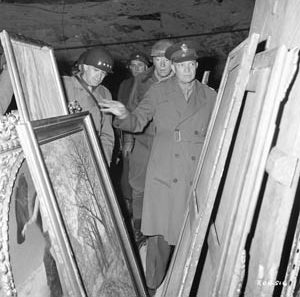
On the 12th, Patton had two unusual experiences—one exciting and one distressing. Five days earlier, Manton Eddy had told him that one of his XII Corps units had discovered a number of sealed vaults 2,000 feet deep in a salt mine at Merkers, 60 miles west of Erfurt. When Eddy went on to say he had no idea what was in the vaults, Patton allegedly responded, “General Eddy. You blow open that…vault and see what’s in it.”
Eddy did as ordered and found the entire German bullion reserve—4,500 bars of gold with an estimated value of more than $57 million along with millions of reichsmarks and dollar bills, paintings by great masters such as Titian and Van Dyck, some of which Patton thought were worth “about $2.50, and were of the type normally seen in bars in America,” and many other treasures. Eisenhower, Bradley, and Patton visited the mine on April 12. As they were lowered down the mine shaft, Patton, according to his aide, said, “If that clothesline (the elevator cable) should part, promotions in the U.S. Army would be considerably stimulated.”
To which Ike replied, “OK, George, that’s enough! No more cracks until we are above ground again.”
Afterward, the three commanders went on to the recently liberated concentration camp at Ohrdruf, less than 30 miles west of Erfurt, where the scenes inevitably shocked and disgusted them. Eisenhower and Bradley spent that night at Patton’s headquarters, and after dinner Ike told Patton that he planned to halt the First and Ninth Armies on the Elbe and direct his Third Army southeastward toward Czechoslovakia. But as Patton was getting ready for bed, he turned on the radio and heard a BBC announcer report the death of President Roosevelt. He immediately informed Ike and Bradley, and they discussed what might happen. It seemed to them very unfortunate that at so critical a period in their history they should have to “change horses.” Actually, subsequent events demonstrated that it made no difference at all.
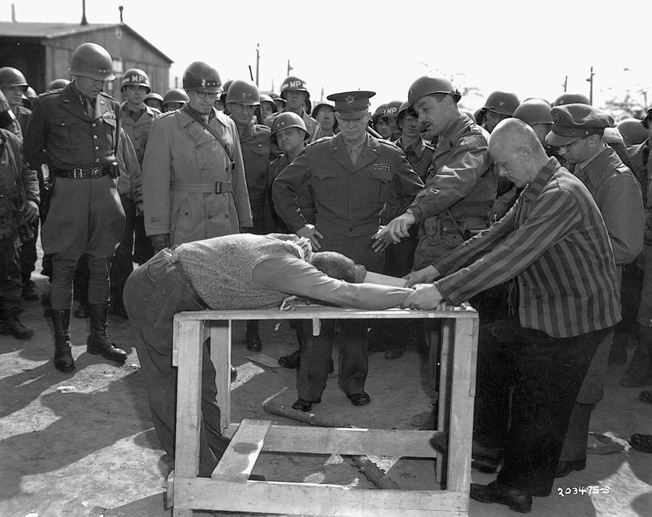
On April 15, Patton visited the Buchenwald death camp, 10 miles to the east of Erfurt and only three miles from the famous town of Weimar, where he “could not stomach the sights he saw … [and] went off to a corner thoroughly sick.” As a result he gave orders that the inhabitants of Weimar were to be made to walk through the camp and see for themselves the results of the bestiality of their countrymen.
A Short Rest in Paris
On April 16, Bradley gave Patton the order he had been expecting since his conversation with Ike on the 12th. His army was to change the direction of its advance from east to southeast and move toward the so-called German national redoubt. This meant it would be moving parallel to the Czechoslovakian border. Patton did not believe in the national redoubt any more than he believed in the Werewolf movement, but he gave the necessary orders. Then, on the 17th, he flew to Paris for a 24-hour break.
On arrival, he visited his son-in-law, John Waters, in the hospital and found him much improved and being prepared for evacuation to the United States. According to his lifelong friend, Everett Hughes, Patton stayed in the George V Hotel and they had dinner together and drank “until the weesome hours.”
At breakfast on the 18th, Patton learned from the Stars and Stripes newspaper that he had been promoted to the rank of full general. He wrote later, “While I was, of course, glad to get the rank, the fact that I was not in the initial group (Bradley and Devers) and was therefore an ‘also ran’ removed some of the pleasure.”
At the time, though, he was thrilled to find that when he arrived at Orly Airport to fly back to Germany, not only had his aide, Colonel Charles Codman, found four-star collar insignia for him to wear, but also his plane had a four-star pennant flying outside and a four-star general’s flag and a bottle of four-star cognac inside.
The Third Army War Memorial Project
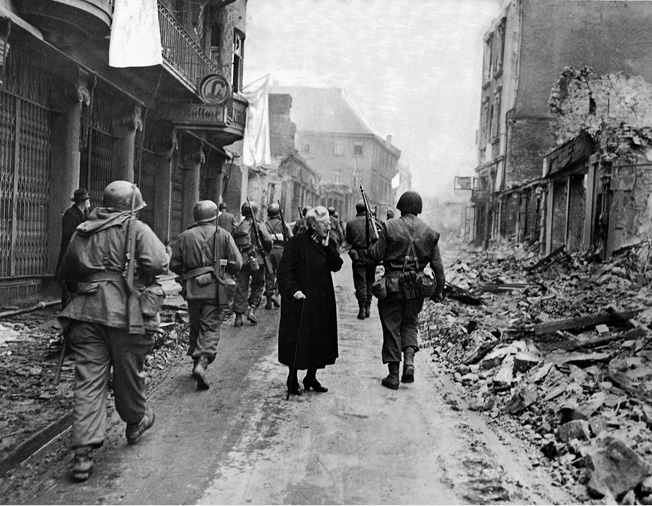
The Third Army’s final offensive began on April 19. By then the Second British Army had reached the Elbe at Lauenburg, the First U.S. Army had crossed the Elbe at Magdeburg and taken Leipzig, and the Ninth U.S. Army had crossed the same river and taken Brunswick.
For his last offensive, Patton developed a system known as the Third Army War Memorial Project. It consisted of firing a few salvos into every town approached, before even asking for surrender. According to Patton, “The object of this was to let the inhabitants have something to show future generations of Germans by way of proof that the Third Army had passed that way.”
The beautiful city of Passau, Germany, was one of the last victims. It was bombarded for 36 hours before Patton’s men entered the smoldering ruins.
On the 20th, Patton flew to XII Corps to say goodbye to his great friend Manton Eddy, who was being evacuated with very high blood pressure, first to Paris and then, like Waters, on to the States. On his return journey he had a very narrow escape from death himself. In order to cover the long distances involved in commanding his army and attending conferences with his superiors, Patton had, since arriving in Normandy, often flown to his destinations in a Piper Cub light aircraft. Usually a reasonably safe way to travel, this was not so on this particular day.
Patton suddenly “noticed some tracers coming by the right side of our plane which, at the same instant, dove for the ground, very nearly colliding with a plane that looked like a Spitfire. This plane made a second pass, again firing and missing … On the third pass, our attacker came in so fast and we were so close to the ground that he was unable to pull out of his dive and crashed, to our great satisfaction.”
It turned out that the pilot of the Spitfire was a Polish officer serving with the RAF. He had presumably mistaken the Cub for a German Fieseler Storch. A second life-threatening incident occurred on May 3, when an oxcart “came out of a side street so that the pole missed us (in a jeep) by about an inch.”
Patton is alleged to have exclaimed, “God, what a fate that would have been. To have gone through all the war I’ve seen and been killed by an ox.”
Pushing into the East
By April 26, Patton’s headquarters was located 75 miles northwest of Regensburg. His leading units had entered the city that same day and had quickly established bridgeheads over the Danube. The Third Army was thus poised to move into either Czechoslovakia or Austria. Both the American and British chiefs of staff had agreed that Czechoslovakia was a political prize that should be denied to Stalin, but Eisenhower, ever fearful of a major “blue on blue” incident with the Red Army, said he did not believe Patton could get to Prague before the Soviets and ordered a halt at the border some 100 miles southwest of the capital.
Bradley, and of course Patton, believed Prague could have been liberated within 24 hours. On May 2, Patton was told that the Seventh U.S. Army was to take over responsibility for reducing the national redoubt and that his army was to halt. His headquarters had moved 19 times since arriving in Normandy and had covered 1,225 miles. Two days later, at 7:30 pm on the 4th, Ike finally agreed that his army could cross the Czech border—but he was to halt again at Plzen, 55 miles from Prague. At this time the Third Army was, according to Patton, at its greatest strength in the war—18 divisions of just over 540,000 men. On the 6th, Bradley telephoned Patton. He was worried that, having heard of an uprising in Prague against the Germans, he might ignore the order to halt.
“You hear me, George … halt!” he yelled. Patton wrote later, “I was very much chagrined, because I felt, and still feel, that we should have gone on to the Moldau river [in Prague] and, if the Russians didn’t like it, let them go to hell.”
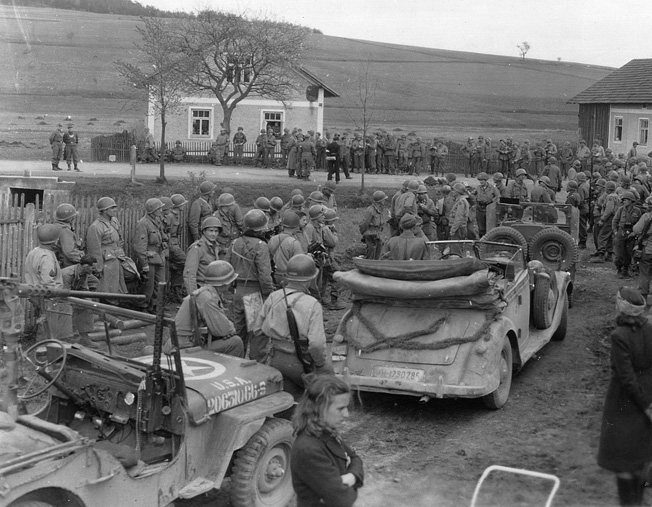
Early on the morning of May 7, Bradley called Patton and told him the Germans had surrendered. “It takes effect at midnight, May 8th. We’re to hold in place everywhere up and down the line. There’s no sense in taking any more casualties now.”
On the same day, together with the Under Secretary of War, Robert Patterson, who was staying with him, Patton flew to a village near the Austro-German border about 100 miles east of Munich, to see a group of Lipizzaner stallions from the Spanish Riding School of Vienna. They had been handed over to one of his units for safe keeping from the Russians.
Although Patton agreed, “These horses will be wards of the U.S. Army until they can be returned to the new Austria,” his private view of the whole event, expressed in his diary, is interesting and, in view of his love of horses and riding ability, perhaps surprising. “It struck me as rather strange that, in the middle of a world at war, some twenty young and middle-aged men in great physical condition, together with about thirty grooms, had spent their entire time teaching a group of horses to wiggle their butts and raise their feet in consonance with certain signals from the heels and reins. Much as I like horses, this seemed to me wasted energy. On the other hand, … to me the high-schooling of horses is certainly more interesting than either painting or music.”
The War According to Patton
At his normal morning briefing on the 8th, exactly two and a half years since he had landed in Morocco, Patton told his staff this would be the last such meeting in Europe. “I think most of them realized I was hoping to have some more briefings in Asia,” he said.
The day after the fighting officially ended, Patton issued General Order Number 98, which outlined the Third Army’s successes and claimed that it had advanced farther in less time than any other army in history—just over 1,300 miles in 281 days. He had, of course, either conveniently forgotten or purposely ignored the fact that Monty’s Eighth Army had advanced some 1,850 miles from Alamein to Tunis in 201 days!
Patton went on to claim that his army had killed or wounded at least half a million Germans and captured another 956,000. The general order ended, “During the course of this war I have received promotion and decorations far above and beyond my individual merit. You won them; I as your representative wear them. The one honor which is mine and mine alone is that of having commanded such an incomparable group of Americans, the record of whose fortitude, audacity, and valor will endure as long as history lasts.”
Patton’s postscript to the war in Europe was written later. “I can say this, that throughout the campaign in Europe I know of no error I made except that of failing to send a Combat Command to take Hammelburg. Otherwise, my operations were, to me, strictly satisfactory. In every case, practically throughout the campaign, I was under wraps from the High Command. This may have been a good thing, as perhaps I am too impetuous. However, I do not believe I was and feel that had I been permitted to go all out, the war would have ended sooner and more lives would have been saved. Particularly I think this statement applies to the time when, in the early days of September, we were halted, owing to the desire, or necessity, on the part of General Eisenhower in backing Montgomery’s move to the north. At that time there is no question of doubt but that we could have gone through and across the Rhine within ten days. This would have saved a great many thousand men.”
The claim that he could have crossed the Rhine within 10 days in early September 1944 is typical of Patton, and one that neither of his direct superiors, Ike or Bradley, believed possible.
Patton and the Soviets
Patton held a press conference on VE Day, during which he forcibly expressed his views on the Soviets. Pointing to a map of Central Europe he said, “What the tin-soldier politicians in Washington and Paris have managed to do today is … to kick hell out of one bastard and at the same time forced us to help establish a second one as evil or more evil than the first … This day we have missed another date with our destiny, and this time we’ll need Almighty God’s constant help if we’re to live in the same world with Stalin and his murdering cutthroats.”
Later that day in a farewell meeting with Cornelius Ryan and another correspondent, he confirmed his views on this subject. “You cannot lay [sic] down with a diseased jackal. Neither can you do business with the Russians … I just couldn’t stand being around and taking any lip from those SOBs.”
General George S. Patton took no great pleasure in the events of VE Day. He already knew that despite his lobbying of many influential figures in Washington, he had no hope of being assigned to the Pacific Theater. As he put it to his III Corps commander, Maj. Gen. James Van Fleet, “There is already a star [MacArthur] in that theater and you can only have one star in a show.”
Patton was also depressed because he knew there would be a rapid reduction in the strength of the U.S. Army in Europe, and he believed this was inviting disaster. On May 7, he had pleaded with the visiting Under Secretary of War, Robert Patterson, “Let’s keep our boots polished, bayonets sharpened and present a picture of force and strength to these people [the Soviets]. This is the only language they understand and respect. If you fail to do this, then I would like to say to you that we have had a victory over the Germans and have disarmed them, but have lost the war.”
When Patterson told him that he did not understand the “big picture,” but asked Patton what he would do about the Russians, he allegedly replied that he would keep the U.S. Army in Europe intact, delineate the border with the Soviets, and if they did not withdraw behind it “push them back across it …We did not come over here to acquire jurisdiction over either the people or their countries. We came to give them back the right to govern themselves. We must either finish the job now—while we are here and ready—or later in less favorable circumstances.”
Needless to say, such ideas were totally unacceptable to the politicians in Washington—and indeed to most of the American soldiers in Europe. All they wanted to do was to go home.
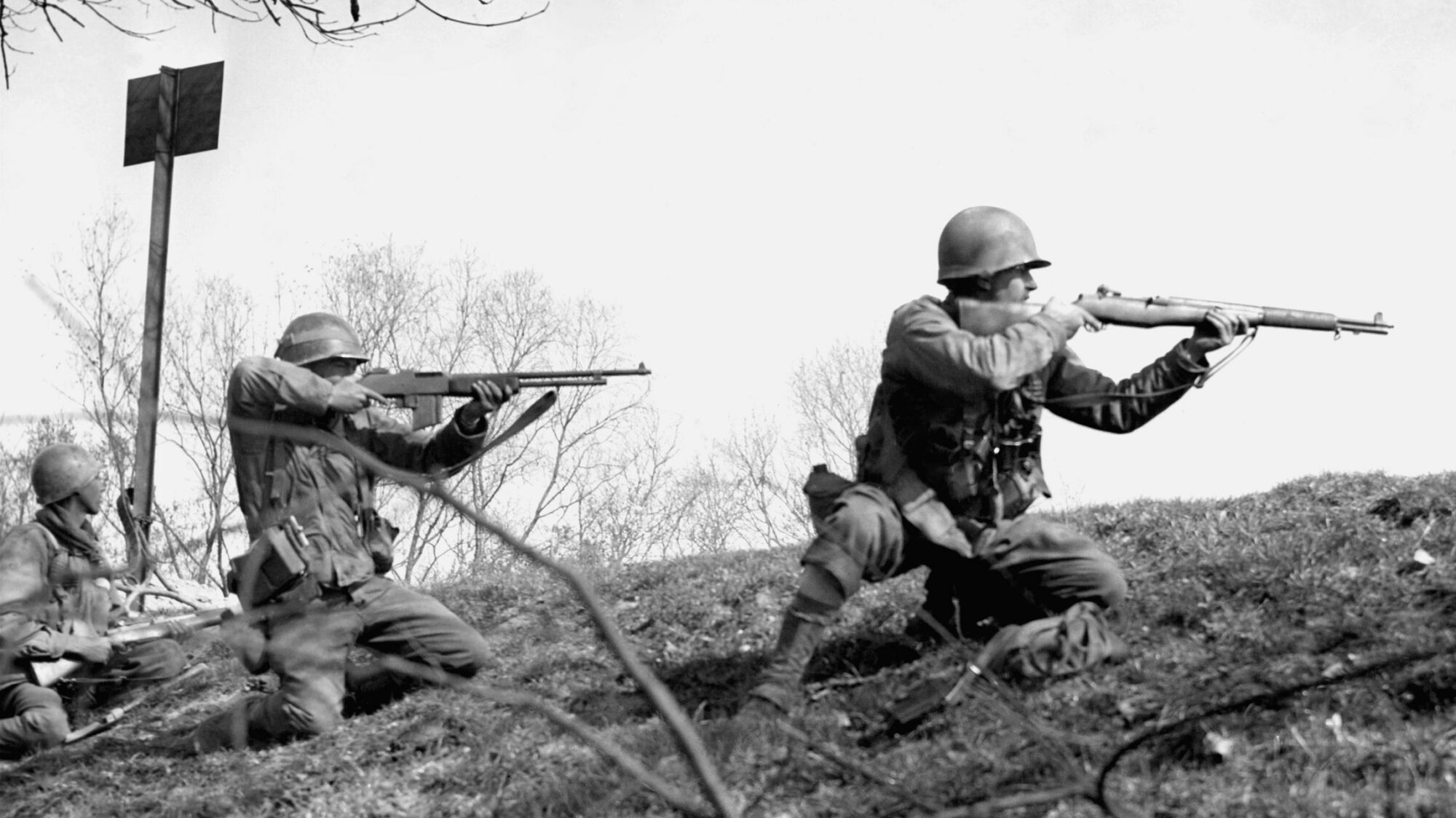
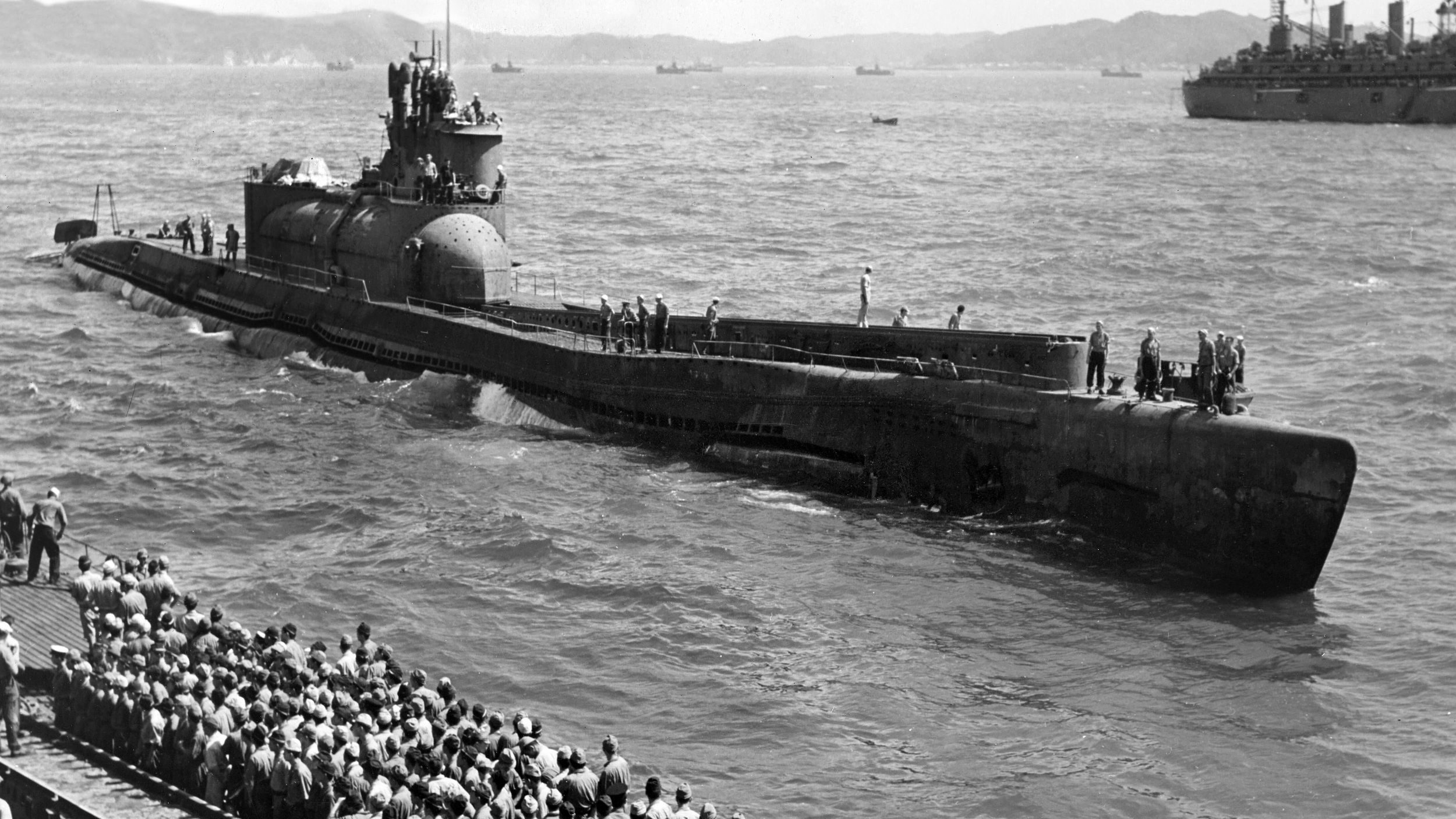
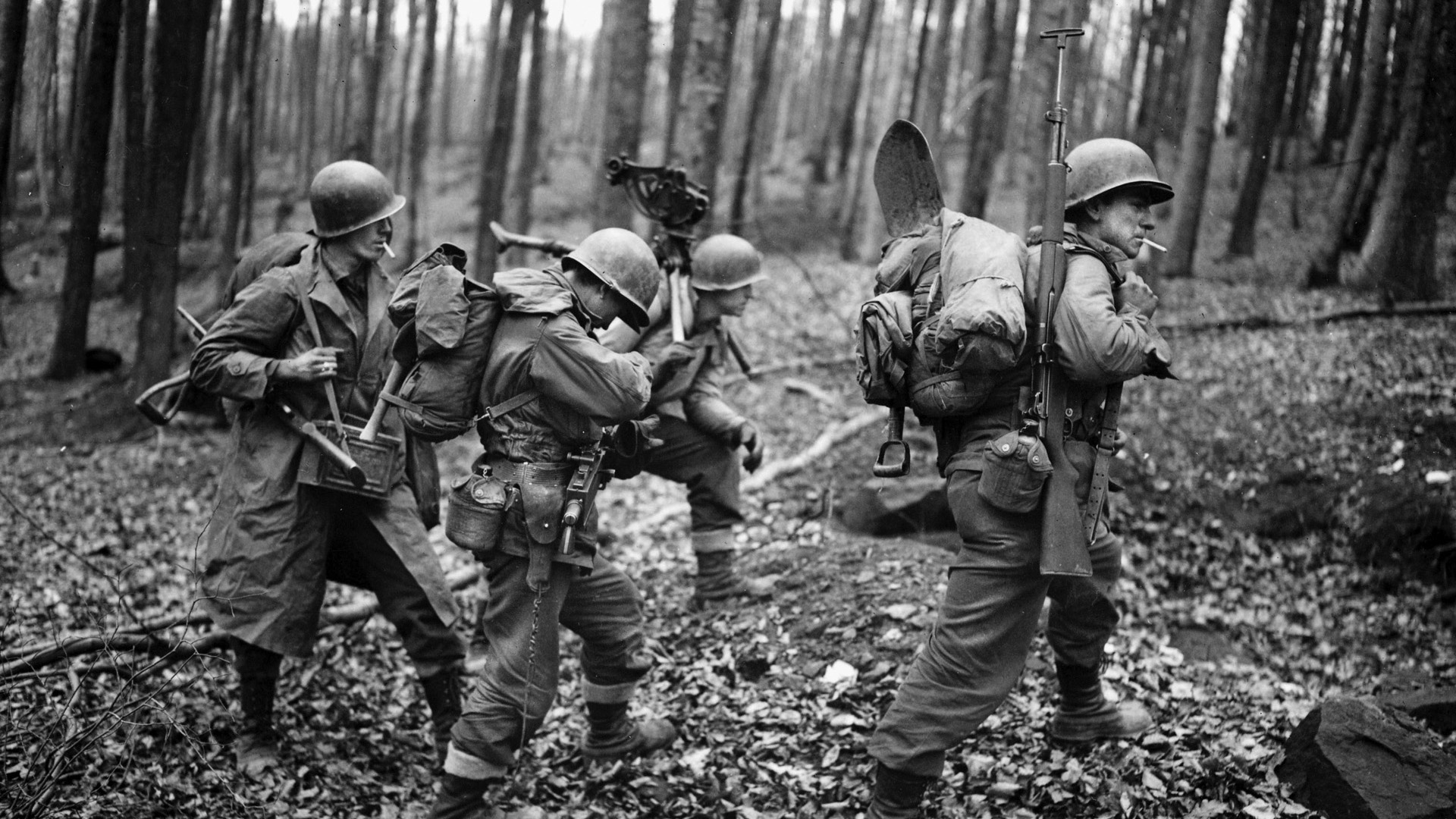
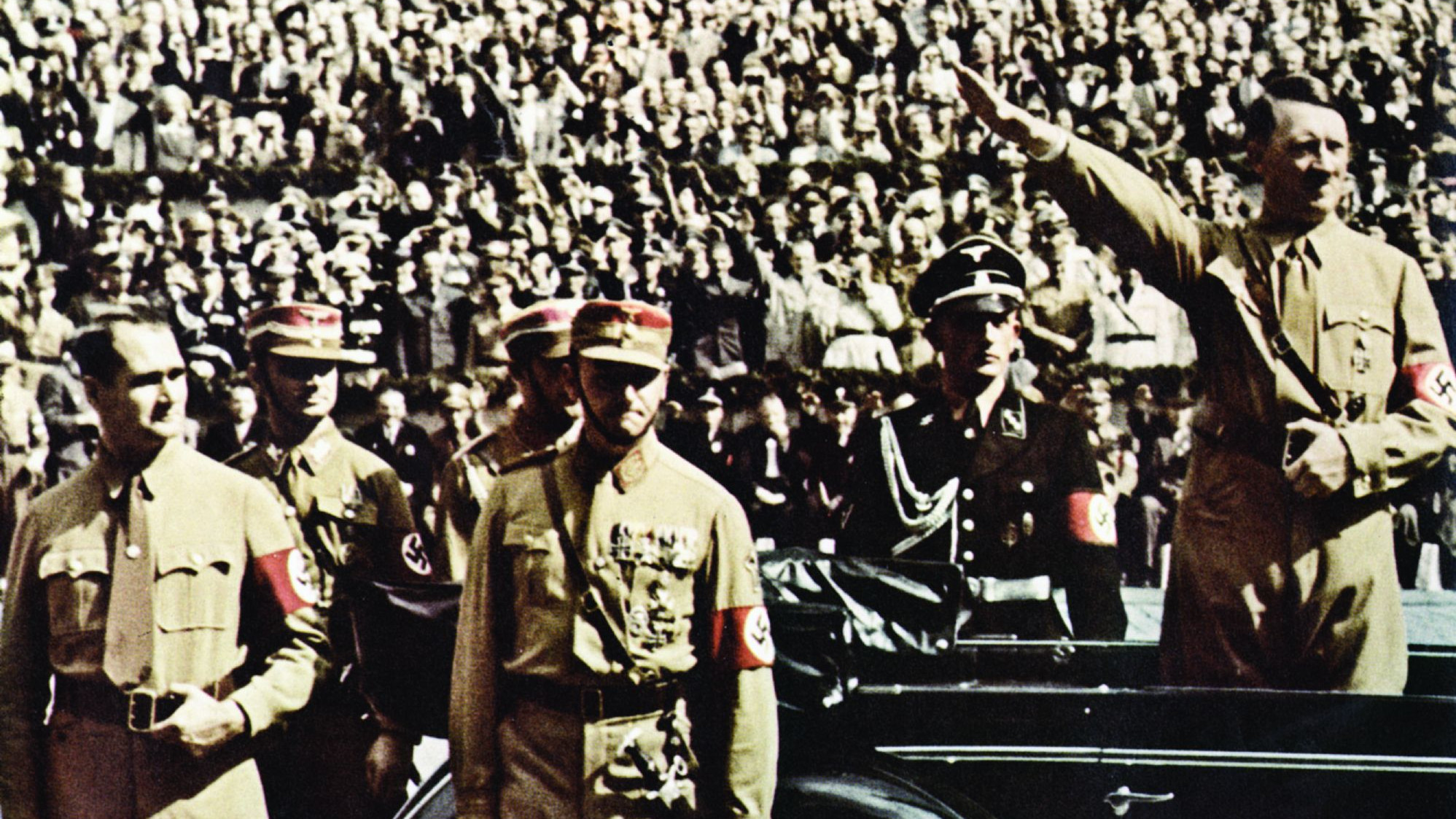
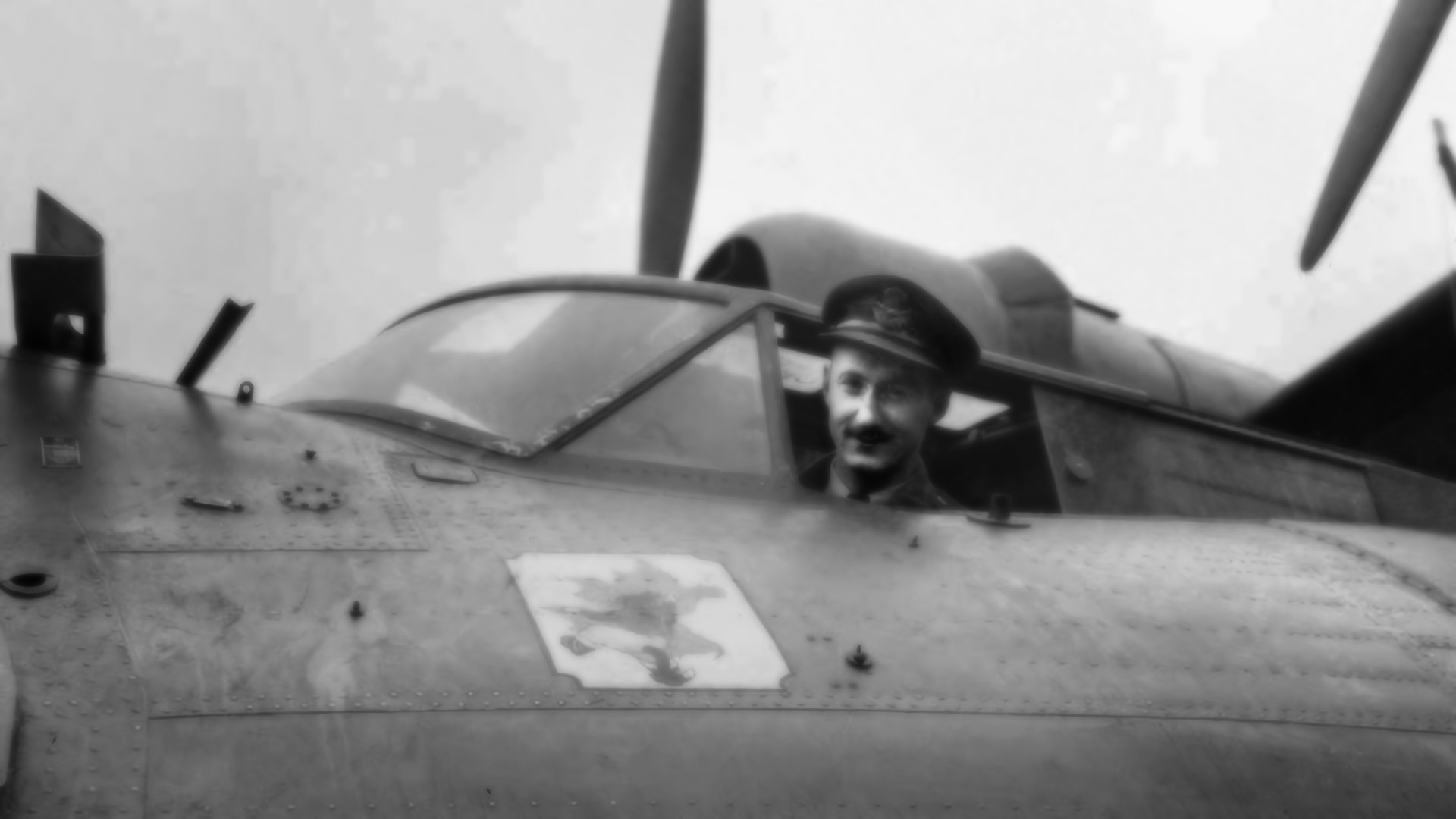
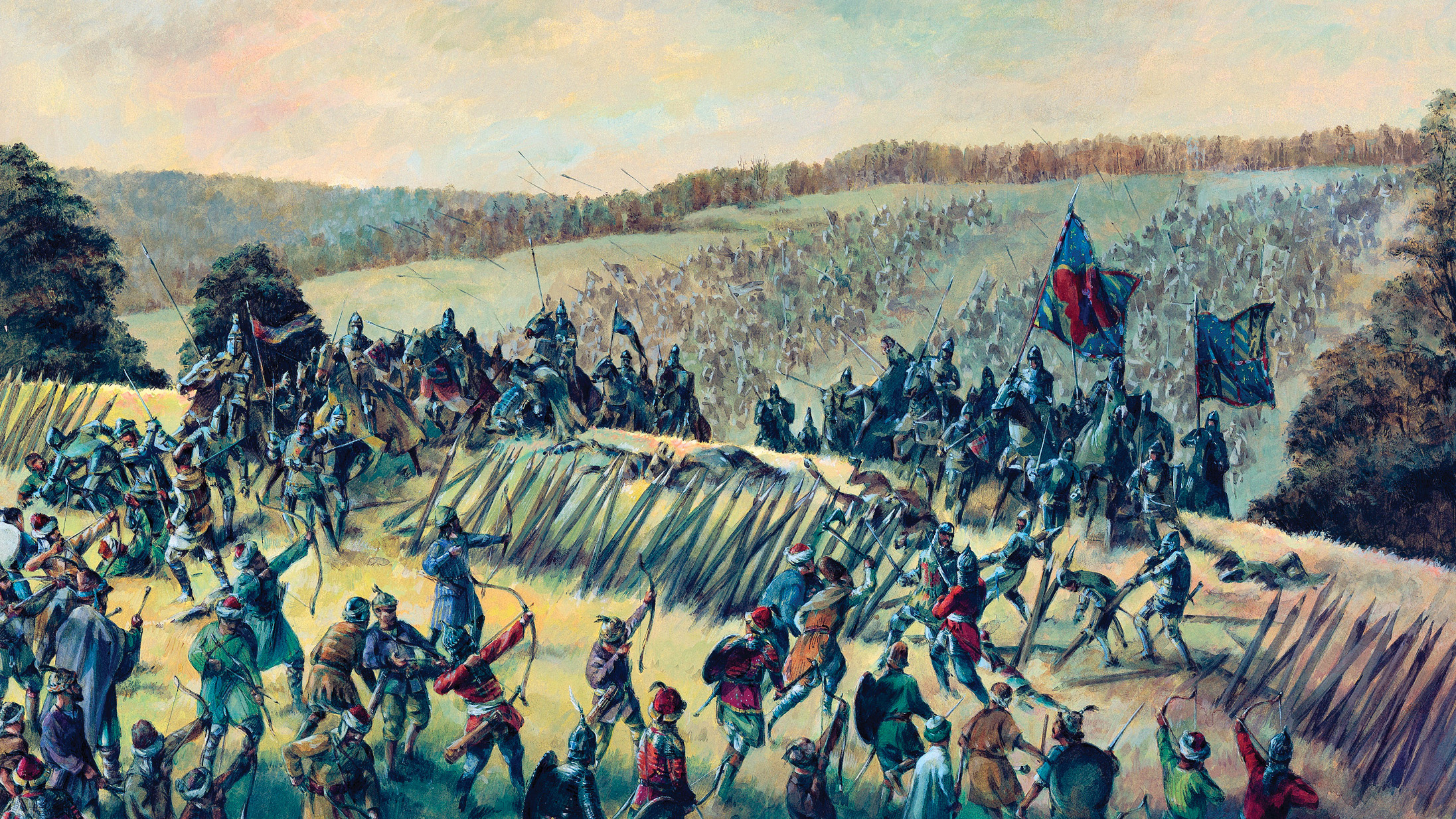
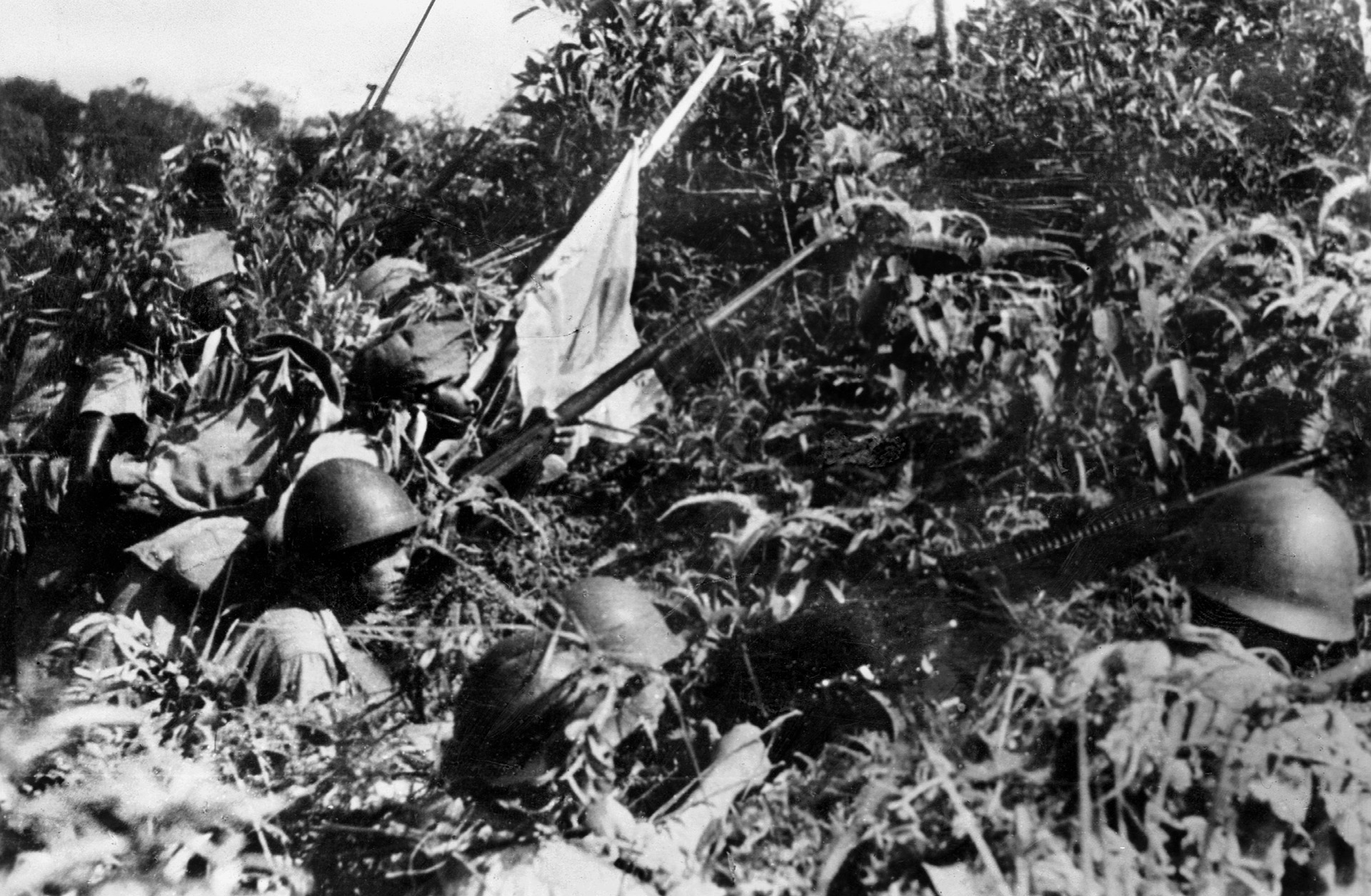
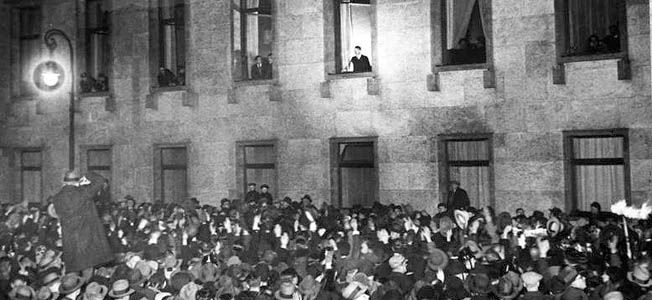
History has proven Patton to be correct about the Soviets.
And look where we are now!
If Ike, Truman and Marshall had listened to Gen Patton and Churchill, imagine no Berlin airlift, no Korean War, no Vietnam war, no Cold War, and none of the bs with Putin.